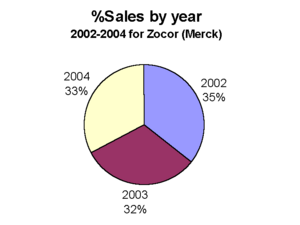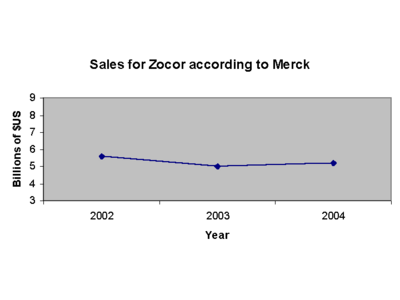If there is any question among lawmakers, policy advisors or payers of the impact generic substitution can have on drug costs, they should draw their attention to recent financials from the retail drug sector. As much as a shortage of big blockbuster branded pharmaceuticals might hold down topline growth, switching to generics as appropriate means big money where it counts for retail pharmacy.
"Our research shows that each generic drug garners at least $5 more in gross profit dollars than the branded equivalent," Lehman Bros. analyst Meredith Adler commented in a July 28 report on the retail drug sector. In general, if a retailer's gross profit margin is between 10 percent and 15 percent on a branded drug, that number jumps to between 50 percent and 70 percent for a generic drug.
And for the bigger pharmacy chains, the incremental lift could be even higher as added scale translates to "lower generic acquisition cost," she added. According to Lehman Brothers research, in 2004 the average selling price for a branded pharmaceutical was $96.01 versus $28.74 for a generic drug.
By Adler's estimates, the higher profit dollars and the continued increase in generic utilization that is expected should add up to higher earnings for chains like Walgreens, CVS and Longs. Generic drugs now account for about 56 percent of all prescriptions filled at retail--an increase of 6 percentage points since 2001.
Driving the rise in generic utilization has been a steady parade of major branded drugs that have lost patent protection in recent years more than $35 million worth since 2000 including Prozac in 2001, Glucophage in 2002, Paxil in 2003 and Neurontin in 2004. In the previous five-year period, just $11 billion worth of branded drugs came off patent.
And the pace is expected to pick up considerably going forward, with at least $70 billion worth of branded drug patents expected to expire over the next five years, including more than $38 billion in the next three years. Of the blockbuster branded drugs (read: sales in excess of $1 billion) scheduled to come off patent in the next few years, the list in 2006 includes:
* Zocor: worth $4.6 billion
* Zoloft: $3.1 billion
* Pravachol: $2.0 billion
* Zithromax: $1.7 billion
* Allegra/D: $1.5 billion.
In 2007, the list includes:
* Norvasc: $2.4 billion
* Lotrel: $1.2 billion
* Coreg: $1.1 billion.
And in 2008:
* Effexor: $2.6 billion
* Fosamax: $2.0 billion
* Zyrtec/D: $1.7 billion.
One area that will shake things up quite a bit is cholesterol-lowering drugs, with Zocor and Pravachol patents due to expire next year. And although Lipitor remains the No. 1 drug not only in that class, but also in the entire U.S. pharmaceutical market and will remain brand-only in 2006, it is expected that Pfizer's $7.7 billion behemoth could take a hit as doctors, encouraged by managed care, switch patients to generic Zocor. "The impact to the generics market would be considerable if doctors got patients to switch to the generic version of Zocor from other statins or began prescribing generic Zocor first before prescribing the stronger and more expensive Lipitor, in a form of step therapy," remarked Adler.
In addition to the sheer number of branded drugs facing generic competition, also driving the growth in generics is the fact that more of the big PBMs are increasing generic ultilization--interesting, considering that many had been charged with using manufacturer rebates and secret payments to keep higher-priced branded drugs at the top of their formularies even if cheaper generic alternatives were available. But changes in PBM rebate programs have made generics a simple matter of good business for the big mail order houses, as well.
"Over the past 12 to 18 months, we have seen a significant increase in the generic utilization rates of the big-three PBMs--Medco, Caremark and Express Scripts-within their mail order facilities," Adler noted. "Although for many years, mail order facilities received incentives from branded drug manufacturers to fill prescriptions with preferred branded drugs ... changes in how rebates are handled and shared with employers have lessened the value of those incentives, and PBMs now have financial incentives similar to retail pharmacies to encourage generic utilization."
Generics, given their cost-saving benefits and the overall impact to the bottom line, hold enormous appeal to a number of different parties, not the least of which are payers. Certainly, a study conducted by researchers from the Agency for Healthcare Research and Quality and published recently in the Annals of Internal Medicine is of great interest to the people footing the bill for health care in America. To estimate the potential savings of dispensing generics versus branded drugs, the team analyzed medical expenditure data from 1997 to 2000. During that period, multisource drugs (read: drugs that face generic competition) accounted for 41 percent of total drug costs.
Some 56 percent of all brand name outpatient drugs had at least one generic equivalent available on the market at the time, and 61 percent of drugs prescribed during that period were dispensed as generics. Most important, by the team's calculations, if generic drugs were substituted in every available opportunity in 2000, the median annual savings would have totaled $6 billion for adults under 65 years of age (or $45.89 per person) and $3 billion for adults ages 65 and older (or $78.05 per person).
The amount of savings could become even greater as generics promise to change the dynamic in the biotech market--perhaps the last bastion of exclusivity for branded drug manufacturers. According to the IMS Health report "Intelligence.360: Global Pharmaceutical Perspective," the biopharmaceuticals market, at $42 billion and growing at 17 percent annually, could become a major target for generic competition. However, exactly when that might be remains a bit of a mystery, as there is no mechanism in place in the United States for marketing biogenerics.
"It's no wonder the biologics industry is attracting generics manufacturers," noted the IMS report. "The timing is right, too, as nine major biotech brands accounting for about $13 billion in current sales have patents due to expire by 2008."
Discounts for biogenerics are expected to range from 30 percent to 50 percent of the branded biological drug's price, but researchers report that engineering costs associated with biogenerics will prevent generic drug makers from offering the deep discounts they currently offer on small-molecule generics. "Consequently, given the price/volume trade-off, biogenerics will not capture more than 50 percent to 60 percent of the branded product's share, in sharp contrast to the 80 percent chemical generics typically take," researchers concluded.
While biogenerics currently are marketed in China, Eastern Europe, India and Latin America, the United States has no regulatory pathway in place for their approval, although the U.S. Food and Drug Administration is expected to issue draft scientific guidance in 2006.
And while generic drug makers and the Generic Pharmaceutical Association are pushing for a biogenerics approval pathway, patent expirations on traditional pharmaceuticals are garnering big-time attention in the interim, with estimates indicating anywhere from $12 billion to nearly double that amount will lose patent protection next year alone.
"As much as $23 billion in branded products in 2006 will come off patent," said R. David Yost, chief executive officer of AmerisourceBergen. "Clearly this will be one of the golden ages for generics."
RELATED ARTICLE: Anatomy of the deal: inside Teva-Ivax.
One of the strongest pipelines in the generics industry just got a turbo boost. This year, Teva expects to launch more than 20 generic products to market. Currently, however, it is sitting on as many as 140 abbreviated new drug applications pending approval from the U.S. Food and Drug Administration, with 34 of those potential first-to-file ANDAs representing roughly $23 billion worth of branded pharmaceuticals.
For its part, Ivax brings some 60 of its own ANDAs, currently pending, including 12 potential first-to-files with a branded value of $13 million.
As a result of the deal, the new company is expecting a slew of important generic drug introductions over the next 18 months, including:
* Zithromax (azithromycin) in 2005.
* Ambien (zolpidem), OxyContin (controlled-release oxycodone), Avandia (rosiglitazone), Provigil (modafinil), Allegra (fexofenadine), Pravachol (pravastatin), Lexapro (escitalopram), Flonase (fluticasone propionate-nasal) and Zocor (simvastatin) in 2006.
* Risperdal (risperidone), Zoloft (sertraline), Celebrex (celecoxib), Actos (pioglitazone) and Norvasc (amlodipine besylate) in 2007.
COPYRIGHT 2005 Reproduced with permission of the copyright holder. Further reproduction or distribution is prohibited without permission.
COPYRIGHT 2005 Gale Group




